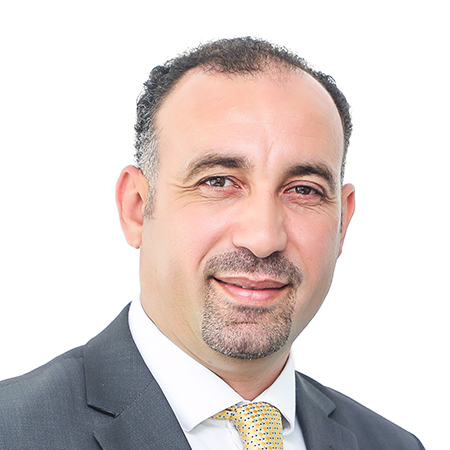Continuous investments into technology will be a longer lasting line of defence since it will be the sustainable differentiator that sets companies apart. So, what other investment can yield a greater return so that organisations can accomplish more while keeping operational costs low? A focus on improving performance and reducing total cost of ownership of digital solutions on the cloud.
According to Ahmad Saad, Country Manager UAE, and Qatar, Liferay, recessions and crises have demonstrated that technology should never be the first casualty in case of an economic downturn. Rather, this should be an area of a company’s budget to nurture and invest in, especially in troubled times. By accelerating time-to-market and reducing costs with a robust platform, businesses will be equipped to survive through future downturns and thrive despite the circumstances.
To effectively reduce the cost of IT operations, CIOs and IT decision-makers need to adopt a strategic approach that involves a combination of optimising resources, automating routine tasks, and promoting cost transparency and accountability, points out Ercan Aydin, Vice President, Emerging Markets, Palo Alto Networks.
IT leaders can optimise technology resources by regularly evaluating, repurposing, or upgrading their technology to ensure they are leveraging the latest and most cost-effective solutions.
It is recommended to automate routine tasks, which is an effective way to reduce IT operational costs, such as system monitoring. With time being our most valuable and powerful resource, automating these tasks can free up IT staff to focus on more strategic initiatives while also reducing the risk of human error.
In addition, by leveraging cloud-based services, IT leaders can also reduce their infrastructure and maintenance costs along with greater flexibility and scalability.
IT leaders must also be able to identify the right approach for cybersecurity and promote cost transparency and accountability. The total cost of ownership can increase when cybersecurity tools are thrown into an environment without understanding the need. Executives from Omnix International, Riverbed Technology, Software AG responded.
Walid Gomaa, CEO Omnix International
While CIOs and IT decision makers monitor ongoing operations costs, inventory of systems and software tools, they must analyse the current processes to identify inefficacies and redundancies. This enables them to understand the existent situation.
Following this, they must develop a detailed optimisation strategy with specific initiatives to reduce costs. This must also be accompanied by a list of priorities, a list of cost-saving opportunities, as well as set a timeframe and budget for the implementation.

With the cost optimisation strategy in place, one can implement the initiatives. This may include consolidating infrastructure, optimising software licenses, transforming to the cloud, and evaluating potential outsourcing, managed IT services. CIOs and IT decision makers are also advised to consider cutting-edge tools based on AI and ML that provide better observability of applications and infrastructure dependencies.
It is important to monitor and measure results to ensure that such initiatives are effective. This includes tracking key performance indicators, KPIs such as IT spending, operational efficiency, user satisfaction and very importantly, the sustainability goal of the organisation.
CIOs and IT decision makers must promote a culture of continuous improvement within the IT organisation. They should get employees involved and ask them to identify improvement areas while providing them with the resources needed to make changes. The strategy needs to be agile so that adjustments can be made while evaluating the KPIs to ensure ongoing success.
Gartner recommends that organizations take a structured and programmatic approach to cost management. Research shows that organizations that continue to invest strategically in tough times are more likely to emerge as leaders. But sometimes, difficult times demand difficult actions.
Gartner research shows that while most CFOs have been relying on pricing-focused strategies to offset inflation, 39% will zero in on cost cutting if inflation remains persistently high. That will soon turn into explicit demands for rapid cost cutting.
Despite the urgency and pressure, pause and remember that there is little value in cutting or stopping projects or services where costs have already been spent or incurred. Also, you will hurt the organization’s ability to ramp up when conditions improve if you cut in areas where you have already invested or are ready to deliver, and in key initiatives that cannot be easily restarted.
Salman Ali, Senior Manager Solution Engineering META, Riverbed Technology
IT is always facing budget pressures, but with the increase of remote work, increasingly complex infrastructure, global economic outlook, supply chain disruptions, and rising costs, those pressures are tighter than ever! Gartner found that 73% of IT leaders are being asked to reduce spend and it appears this appeal is justified – although spending on software is set to increase 11.8% this year, and a report by Flexera shows that 38% of desktop software spend and 33% of SaaS spend are wasted due to under-used licenses.
While there is potential to reduce IT costs, it can be extremely difficult to identify where this can be achieved without impacting end-user productivity and satisfaction. The increasing prevalence of SaaS, hybrid work force and cloud infrastructure make it challenging to monitor digital experience and usage, leading to bloated software, network and cloud spend.

The first step is to gain visibility through solutions that deliver insight into user experience, digital performance, and network traffic to intelligently reduce costs without harming the business. For example, Digital Experience Management, DEM tools can locate devices with high levels of resource utilisation, view complete device list and issues, and reclaim unused or underused licenses to lower IT costs.
Or consider how DEM could be used to adopt a smarter approach to device refresh cycles – something that would yield significant cost savings given that employee device costs have risen 20% since the beginning of 2021.
Traditionally, teams have relied on a device’s age as an indicator for when it is time to refresh. This, however, does not speak to the actual health or performance of the device. DEM offers insight into actual user experience, which helps teams make more informed decisions to replace devices when they’re no longer performing well. Targeted device replacement saves organisations money by allowing them to replace devices based on user experience rather than device age.
When IT teams approach IT asset cost reduction, they are often forced to make sacrifices in their digital transformation initiatives or make cuts that end up harming the user experience. If instead these teams are armed with unified observability solutions that pinpoint IT cost issues like software bloat, unused licenses, poor network performance, and unnecessary cloud spending, they could strategically eliminate wasteful spending without sacrificing on their innovation roadmaps.
Nasri Nassereddine, Regional Sales Director, Software AG Gulf and Levant
Adopting the right IT strategy in an era where organisations around the world are being challenged by change is vital – driven by competition, innovation, environmental changes, and crises. IT departments need to be integrated into the company’s business strategy and CIOs need to rethink enterprise IT as business enablers versus merely as IT leaders. Digital transformation needs to be thought of as promoting a change in the business model to maximise integration and business processes, to meet business objectives faster.
A misstep today can have a lasting effect on an organisation’s ability to compete in the future. Organisations must deliver transformation on multiple fronts including elevated agility, climate-change as per ESG regulations, resilience, cyber security and more, in the context of accelerated change. For all this, IT leaders need to have an interconnected view of the operating model and integrated roadmaps, to elevate efficiencies across the board.

An interconnected view of the organisation’s operating model, how it is supported by IT, and how it is being impacted by multiple, parallel transformation efforts is mandatory, to achieve transformation on improved agility, cost efficiency, sustainable IT, organisational resilience, and cyber-security. Moreover, integrated roadmaps of IT assets and business deliverables are key to ensuring programs are synchronised, without planning conflicts to for increased cost and operational efficiencies.
A modern enterprise architecture enables the fulfilment of a company’s strategic mission, rationalising and aligning IT operations and processes with strategy for a more efficient business. Moreover, reorganising the overall IT landscape reveals how critical business functions and applications can be optimally supported to unify and reduce redundancies, to avoid the cost of duplications – across data, systems, and resources.
Sustainability as a new corner stone of business value that is widely regarded as the next big revolution disrupting the way that business gets done. Strong ESG credentials drive down costs as organisations focus on operational efficiency and waste reduction.
Assessing and managing technical debt is an important factor in achieving the operational excellence required to survive in the digital, connected world, to avoid long expensive journeys and an obstacle to progress. Consolidating the process, application, and technology landscape is essential to simplifying the operating model of the organisation thus making it easier to manage and change. IT leaders must ensure that the IT landscape is simultaneously being simplified and optimised across multiple dimensions – business, technical, cost and risk.


